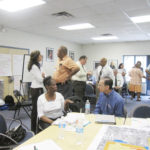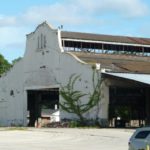Location: Nationwide and Jacksonville, FL (pilot) | Client: EPA Superfund Redevelopment Initiative | Project Date: September 2011 – March 2013
Project Images
Links and Resources
Project Description
Situation
Many communities located near Superfund and other contaminated sites are impacted by disinvestment, multiple environmental burdens, lack of services, and stark health disparities. Addressing environmental justice concerns for overburdened communities is a priority for EPA. Therefore, EPA’s Superfund Redevelopment Initiative (SRI) sought to find a method for incorporating health, prevention and wellness considerations into their Superfund site reuse assessment to improve health and wellness outcomes.
Solution
Skeo conducted a national review of best practices and community indicators for health and sustainability. Based on that review, Skeo distilled a set of relevant indicators into an assessment framework to be applied to the reuse planning process. The framework included methods for evaluating each indicator and tracking progress over time. Skeo piloted the approach at the Fairfax St. Wood Treaters (FSWT) Site.
Outcome
The assessment framework was captured in a final report, which was released in early 2015. Steps in the assessment framework include:
- Identify community goals.
- Determine site suitability.
- Conduct land use and health/wellness service analysis.
- Determine health and wellness needs.
- Develop future land use recommendations, including (1) remedial considerations, (2) local planning considerations and (3) health and wellness opportunities.
The pilot project found that residents in this zip code suffer from the highest health disparities within the county based on birth, mortality and emergency room data. The neighborhood is also burdened with environmental risks and experiences an absence of many land uses associated with better quality of life and better health outcomes.
The pilot study concluded that neighborhood could benefit from the following health and wellness features:
- A dental, mental health and/or vision facility.
- Extension or expansion of an existing Federally Qualified Health Center.
- A grocery store and neighborhood retail services.
- Affordable housing.
- Arts and cultural facilities.



